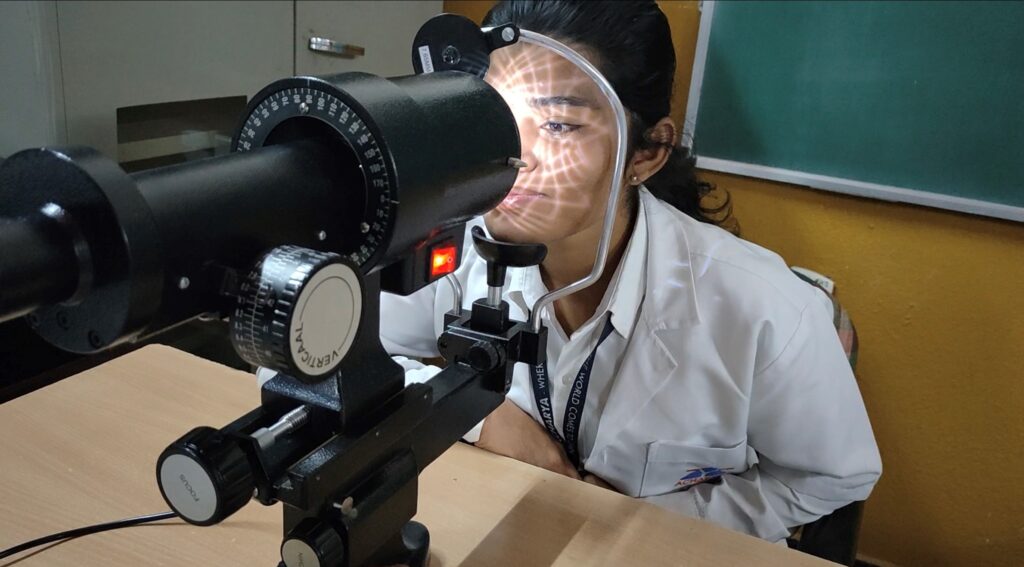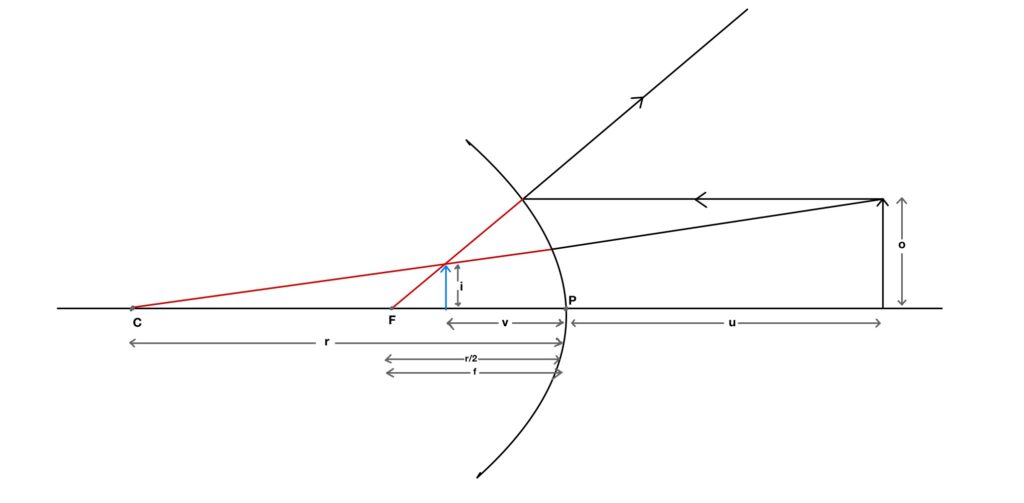The keratometer is a specialized instrument used by optometrists and ophthalmologists to measure the curvature of the cornea. This measurement is important because it helps optometrists/ophthalmologists diagnose and manage a variety of eye conditions, such as astigmatism and keratoconus. In this blog post, we will discuss what a keratometer is, how it works, and why it is an essential tool for eye care professionals.

What is a keratometer?
A keratometer, also known as an ophthalmometer or a corneal topographer, is a device that measures the curvature of the anterior surface of the cornea. It is used to determine the refractive power of the cornea, which is important in determining the patient’s visual acuity.
Principle of keratometer
Keratometer is based on the principle of reflection and the fact the anterior surface of the cornea acts like a convex mirror. When an object of known size is projected, it is reflected from the cornea (Purkinje image I). By comparing the size of this reflected image and the object, corneal curvature can be measured.

Where
P = Centre pole of the convex mirror
o = Object size
u = Object distance from P
i = Image size
v = Image distance from P
C = The centre of curvature of the convex mirror
F = The focal point
f = Distance of focal point from P
r = Radius of curvature
For convex mirror:
M = Image size (i) / Object size (o) = Image distance (v) / Object distance (u)
i/o = v/u
this can be also written as :
o/u = i/v
o/u = 2i/r ( when the object is situated at infinity image will be formed at F and distance of which is equal to half of the radius of curvature. v = f = r/2)
r = 2ui / o
Where object size will be constant, the image size will be known and the distance of the object from P will be also known. So radius of curvature can be calculated by using above mention formula r = 2ui / o
How to convert mm to Diopter
This corneal curvature can be converted into dioptric power by using the formula:

Here remember an approximated corneal refracted index is used which equals 1.3375 instead of using the actual refractive index of the cornea which is equal to 1.376. As we know by now keratometer measures the anterior radius of curvature and gives us value in meters. But when dioptric power will be calculated using the actual refractive index of the cornea (1.376) it only shows anterior corneal surface refractive power, calculating only anterior corneal refractive power is baseless because we usually want to take the total power of the cornea which is a combination of anterior and posterior curvature of the cornea. That reason we use approximated or keratometric refractive index (1.3375) of the cornea which is equal to 90 % of anterior corneal refractive power and the left 10 % will be neutralized by posterior curvature of the corneal surface.
Simplest formula for converting mm to diopter or diopter to mm = 337.5 / r(mm) or 337.5 / D
Uses of keratometer:
- Measuring anterior corneal curvature (central 3mm) is one of the primary applications of the keratometer
- Assessing the amount and direction of corneal astigmatism is another important use of the keratometer
- The keratometer also plays a critical role in assessing the integrity of the tear film, measuring the non-invasive break-up time (NIBUT)
- Initial base curve selection during contact lens fitting is done based on keratometer readings.
- Diagnosing and monitoring irregular astigmatism, including in the pre-clinical stage of keratoconus and other corneal diseases
- Keratometer helps to differentiate between axial and refractive ametropia
- Used in IOL power calculation for cataract surgery.
Procedure of keratometry
I. Calibration:
Keratometer has to be calibrated before use to ensure the accuracy of measurement. A steel ball of the known parameter is placed in front of the keratometer, and its values are fixed on the dial. Then the mires are focused
II. Patient adjustment:
The patient is made to sit comfortably in front of the keratometer with the head against the headrest and chin against chin rest. The eye which is not being examined is occluded with an occluder.
III. Instrument Alignment:
Looking outside the instrument, the keratometer should be aligned with the patient’s eye by raising or lowering and by moving it to the left or right until a reflection of the mire is seen on the patient’s cornea
IV. Focusing the mire:
Looking through the eyepiece first focus on the mire to get a clear view of mires (3 circles)


Once mires are focused adjust the keratometer such that the reticle is in center of lower right circle.
Adjust the vertical wheels until the – signs are overlapping


Adjust the horizontal wheels until the + sign are overlapping


In case of oblique astigmatism mires are not in same plane. In such case rotate the instrument until the + signs are on same plane.


How to record keratometer reading?
Read the value lined by the red line on both the vertical and horizontal wheel.
Document the reading on the horizontal wheel as
Eg: 41.75 D @ 180 (K1)
Document the reading on the vertical wheel as
Eg: 42.00D @ 90 (k2)
Astigmatism is given by: K1-K2 X towards K1
: -0.25 x 180

For more information about Keratometry please watch video down below
Learn more about optometric procedure. Click link below.
https://optominsight.com/category/optometric-procedure/
Lecturer (Nethradhama School of Optometry)
Moptom
